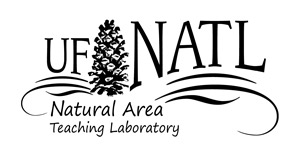
Hammock Photo Gallery
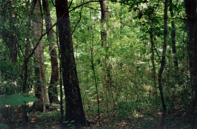 |
A Mixture of Hardwoods NATL's hammock hosts a mixture of hardwoods, including laurel oak, live oak, pignut hickory, swamp chestnut oak, and flowering dogwood. These and other hammock species have shade-tolerant seedlings, enabling the hammock to continue indefinitely. Although most hammock species are killed by fire, the hammock's moist soils and less combustible litter usually stop any fires that reach it. |
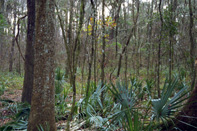 |
Many Small Trees The large number of small trees in the understory of portions of NATL's hammock shows that its canopy is not fully developed. Valuable large trees may have been cut more than 60 years ago. [grid stake F9, looking south, January 1997.] |
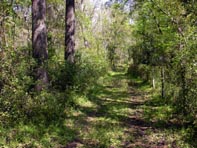 |
Some Large Trees: Sweet Gums Two sweet gums (24 and 23 inches in diameter) along NATL's South Trail. A 2003 tree survey lists 10 sweet gums with diameters of 18 inches or more that are within 90 feet of NATL's south property line. |
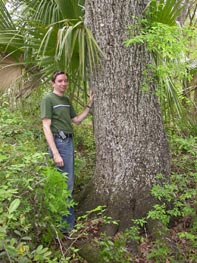 |
Some Large Trees: Hickories This pignut hickory (29-inch in diameter) is along the South Trail near Archer Woods Apartments. A 2003 tree survey lists 17 hickories with diameters of 18 inches or more that are within 90 feet of NATL's south property line. |
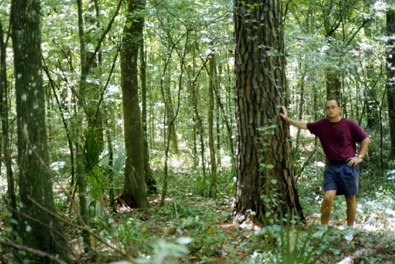 |
Large Loblolly Pine in Hammock A few large loblolly pines occur in NATL's hammock. Since their seedlings are not shade tolerant, they must owe their success to a temporary break in the hammock's canopy, for example, where wind or a logger felled a large tree. [The man holding up the tree in this picture is Clay Scherer, the instigator of NATL's on-line picture gallery.] |
>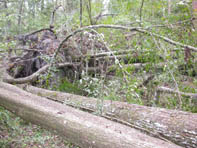 |
Effects of 2004 Hurricanes In September 2004, hurricanes Frances and Jeanne toppled ten trees =>12 inches DBH in NATL's hammock: 2 live oaks, 18 and 15 inches DBH; 2 pignut hickories, 25 and 21 inches; 2 sweet gums, 19 and 18; 1 swamp chestnut oak, 31; 1 laurel oak, 26; 1 water oak, 33; 1 basswood, 12. In the foreground of the photo at left are two of these trees. In the background is another, largely hidden by the smaller trees that fell with it. [DBH=diameter breast high] |
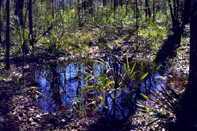 |
Temporary Pool NATL's hammock includes a number of depressions that fill with water during periods of excessive rainfall. These may be used by certain frogs and salamanders for breeding. |
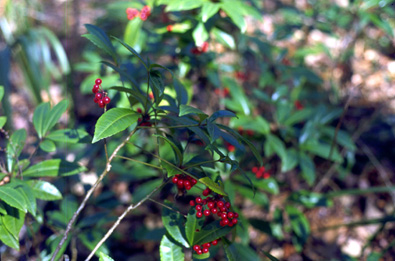 |
A Pretty Plant Ardisia crenata, sometimes called Christmas berry, is a native of southeast Asia. Its dark green foliage and bright red berries make it popular as an ornamental. |
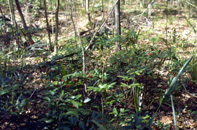 |
And It's Invasive! When NATL was begun, in 1994, Ardisia crenata had escaped into NATL's hammock, where it threatened to crowd out native plants and dominate the understory. Most of these unwelcome, alien plants have been extirpated by uprooting, but others remain and will spread unless further action is taken. |
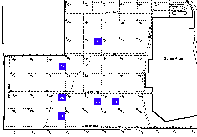 |
Botany Department's Permanent Plots (1997-date) In 1997, Botany Professor Francis E. "Jack" Putz set up six, 20 x 20 meter, permanent plots in forested portions of NATL and made the initial identifications, counts, and measurements of the trees within each. The results of this and subsequent censuses of these plots are recorded in an Excel spreadsheet. |
More on the hammock ecosystem and its management can be found on the Hammock Ecosystem page.
